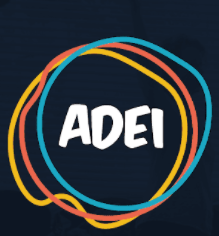Asking Questions
1. Hot Seating
Hot-seating enables us to find out information about people who we meet in drama but may offer an opportunity to challenge and even confront characters. Normally the character to be ‘hot-seated’ sits in a chair in role and is questioned by the rest of the class who may of may not be in role themselves. The hot-seated role might be represented by an individual member of the class, a group undertaking a collective role or by a TiR.
2. Talking Objects
In this strategy members of the class physically represent objects which can talk and interact. Some members of the class place themselves in turn, as objects in a specific location and other members of the class can then question those objects in order to find out more about a location, situation or character. When introducing the strategy for the first time it’s important to stress that we are very interested in the object’s perspective on the room in which it lives and the person who owns it. The physical representation is of secondary importance to what the object says. For example, a mirror in ‘Mary’s’ bedroom would be able to tell us if she takes pride in her appearance but we would know nothing about ‘Mary’s’ life outside the bedroom. It is often useful to give people an opportunity to think of the questions they are going to ask an object before they actually ‘meet’ it.
3. Tracking Thoughts
Eavesdropping (overheard conversations)
This is a way to access what is being said and thought by individuals, working pairs and small groups. It gives opportunity for spoken fragments to be heard by all. Short scenes are improvised for a while and then the action is frozen, The teacher walks around the space pausing in front of individual groups or pairs (as in listening in). This is a cue for a scene to reactivate (either moving forward or returning to replay what has already been said). We can ‘eavesdrop’ until the teacher moves on at which point the scene will freeze and the next will come alive and be heard as the teacher arrives.
Statement prompts
Statement prompts are useful thinking and speaking frames which offer a ritualistic, structured and supportive way for participants in a drama to contribute and share their ideas. In this strategy the teacher provides the opening words of a statement which needs to be completed in turn by individual members of the class. Teachers can make up their own statement prompts, such as ‘I wonder……’; ‘I remember……’; ‘The first thing I saw was…..’; ‘I’m leaving tomorrow because……’
Thought-tracking
This is the most frequently used method of accessing and sharing the thoughts of characters in a drama. At a given moment, a drama can be paused and everyone in role speaks their thoughts of a character, which might be their own character in the drama or else a designated character at that particular moment.
Thought-tracking: human keyboard
This is particularly useful in tracking the thoughts of collective roles. Ask members of a collective role to stand closely together and sum up what they were thinking and feeling in a word or phrase. Activate the chosen word and phrases by tapping group members on their shoulders. When tapped, each person will speak their chosen words. Shoulders now become keys on a keyboard. Interesting effects and meanings can be achieved by repeating the same ‘note’ for emphasis or playing two notes at the same time for synchronicity or contrast.
Invite members of other collectives to play the keyboard. Experiment with two players (four hands) or three players (six hands). Alternatively invite the ‘keyboards’ to improvise without hands activating the ‘keys’ allowing people to decide for themselves the most appropriate and effective moment to speak aloud.
Groups can experiment with repetitions, echoes and pauses making their own improvised effects. You can add meaning and depth to still images or freeze-frames by writing characters’ thoughts on pieces of paper and placing them in the images as in comic strips and photo- stories. Appropriately shaped laminated thought-bubbles are a very cheap and useful resource as they can be wiped clean and used time and time again.
Thought-tracking: passing thoughts
In this variant of thought-tracking a character stands in the centre of a circle. Individual members of the class take turns to cross the circle speaking aloud the thoughts of the character as they pass.
